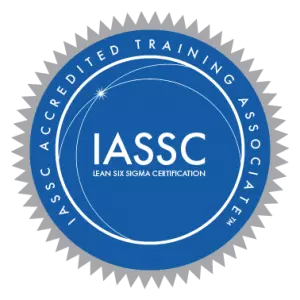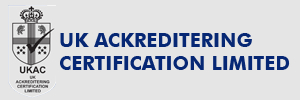
Companies are increasingly focusing on operations management. The business process needs to be up to the mark to remain in the competition and grab the attention of the customer. To improve the business process, the Six Sigma Green Belt is one of the most effective techniques. This skill is in high demand nowadays. Professionals are applying for Six Sigma certificationin order to start a career in this field. If you are about to appear for an interview in this domain, here are the top 30 interview questions that may be asked during the interview:
1.What is Six Sigma?
Six Sigma is the technique of improving business processes by paying attention to quality management. It is a data-driven technique to improve product and service quality. This technique helps in reducing waste and making the process at par with time. It promises maximum productivity to the business
2.What is the value of Six Sigma?
The value of Six Sigma is the chance of 3.4 errors per million opportunities. This helps the businesses in operating at 99% accuracy. The process control is attained at such precision.
3.Who developed Six Sigma and when?
Six Sigma was developed by Motorola in 1986
4.Name the developers of Six Sigma.
Six Sigma was developed by Bill Smith and Mikel Harry
5.What are the principles of Six Sigma?
Some of the key principles of Six Sigma are:
- Focusing on customer requirement
- Process improvement
- Formulate flexibility in the process
- Statistical analysis of the best possible way of working
- Identifying the root cause of the problem
6.What is the full form of DPMO and DPPM?
DPMO stands for defects per million opportunity while DPPM stands for defective part per million.
7.What is the Pareto Principle?
This is one of the most famous principles of Six Sigma. It is also known as the 80-20 rule. This means that 80% of the effects come from 20% of the causes. This means focusing on the overall effort of 20% instead of paying the same attention to the 80%. One should realize the key areas in operations. It saves a lot of time. Six Sigma black belt certification includes practical implementation of this principle.
8.Name some quality Management tools of Six Sigma?
- Cost-benefit analysis
- CTQ Tree
- SIPOC analysis
- COPIS analysis
- Visual Workplace
- Quality function deployment (QFD)
- Taguchi methods
- 5s
- Seven wastes
- Value stream mapping:
9.What are the different kinds of variations used in Six Sigma?
There are four kinds of variations that are used in Six Sigma
- Mean
- Median
- Mode
- Range
10.What is the difference between the Six Sigma DMAIC and DMADV techniques?
- DMAIC stands for define, measure, analyze, improve, and control. It is the technique that is used to improve the existing business process.
- DMADV stands for define, measure, analyze, design, and validate. This technique works wonders in improving the new business processes being formulated in the company.
11.What is the difference between CPK and PPK?
CPK is the process capability index. It measures how close the process is running to the specification limit, relative to the natural variability of the process. PPK stands for process performance index. It helps in verifying whether the sample that is generated for the process is capable of meeting customer requirements or not.
12.What is standard deviation?
Standard deviation tells the degree of variation in a set of measurements. It is calculated by measuring the average spread of data around the mean.
13.What is a 1.5 sigma shift?
1.5 sigma shift considers what happens to every process over many cycles of manufacturing. Master black belt certification explains all such concepts in detail.
14.What is FMEA?
FMEA means failure mode and effective analysis. It is a proactive and systematic approach that identifies and analyzes the potential failures and what are its effects on the product/ service and the business process.
15.What are X bar and R charts?
These are the two most common charts that are taught in the course of lean six sigma black belt . It is used for statistical process control procedures which is used to analyse the process behavior and its outcome over time.
16.When is regression used in Six Sigma?
This is one of the most used techniques which is used to define the relation between the set of input variables and output variables. There are various types of regression which are as follows:
- Curvilinear Regression
- Probit Regression
- Simple Linear Regression
- Logit Regression
- Multiple Linear Regression, etc
17.What are flowcharting and brainstorming techniques?
Flowcharting is the method of displaying the sequential steps of a process or workflow while brainstorming is the technique of generating original and creative ideas for resolving any issue, coming up with any solution, etc.
18.Name some tools of Six Sigma?
Some important tools of Six Sigma are as follows:
- Kaizen (continuous improvement)
- Pareto Chart
- Poka-yoke (mistake-proofing or inadvertent error prevention)
- FMEA
- Regression Analysis
- Value Stream Mapping, etc
19.Name some common levels of Six Sigma Certification.
The three main levels of Six Sigma are:
- Lean Six Sigma Green Belt
- Lean six sigma black belt
- Lean six sigma master black belt
20.What are the benefits of Six Sigma?
Here are some of the ways in which businesses can benefit by using the Six Sigma technique:
- Reduces operational cost
- Optimizes the process as per the need of the time
- Reduces cost
- Helps in building a customer base that remains loyal to the company and its service
- Increase the revenue of the company by leaps and bounds
- Improves project visibility at the team level, etc
21.What is SIPOC?
It stands for suppliers, inputs, process, output, and customer. This tool is used in creating a process map and providing a high-level overview of the Six Sigma project.
22.What is the RACI matrix in Six Sigma?
RACI is the acronym for
- Responsible – The person to whom the task is assigned.
- Accountable – The person who assigns tasks to others.
- Consulted – Subject matter experts who can guide other people in the team who are doing the tasks.
- Informed – A person who is informed a task is complete
23.What is the full form of TRIZ?
TRIZ stands for Theory of Inventive Problem Solving.
24.What is the P-value?
It stands for probability value which tells the significance of the result based on the null hypothesis. The value lies between 0 and 1.
25.Name some Lean Six Sigma project types.
- Designing new process projects
- Implementing new infrastructures
- Quick win projects
- Redesigning new process projects
- Process improvement projects
26.What is the Kano Model?
Kano is a product development tool that is used to identify the voice of the customer (VOC). Some of the characteristics of the Kano model are as follows:
- Must-Haves
- Customer needs
- Dissatisfying
- Delighters
- Indifferent
This tool is taught during the Lean Six Sigma Green Belt course.
27.What are the quality levels of Six Sigma?
- 6,90,000
- 3,08,537
- 66,807
- 6,210
- 233
- 3.4
28.What are the three key elements of Six Sigma process improvement?
- Customer
- Process
- Employee
29.What is the main difference between Lean and Six Sigma?
Lean methodology focuses on waste reduction in a process. Six Sigma helps in reducing variation as compared to the original business process performance.
30.What are the three steps for Root cause analysis?
- Open step
- Narrow step
- Close step
All the above questions and their practical implementation are covered in Six Sigma Green Belt certification . If you are thinking of applying for the course, ISEL Global Education is your go-to place. Apply now!




